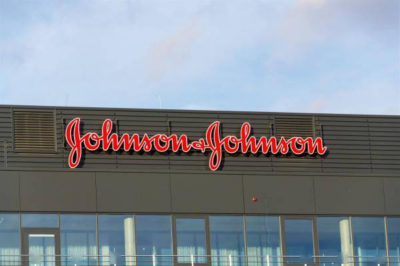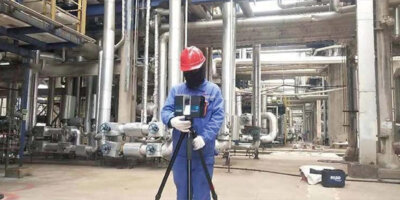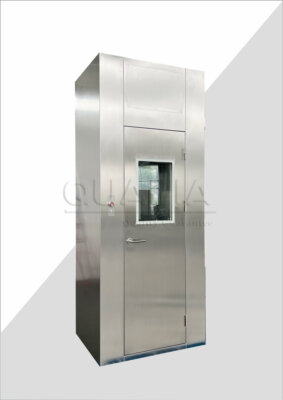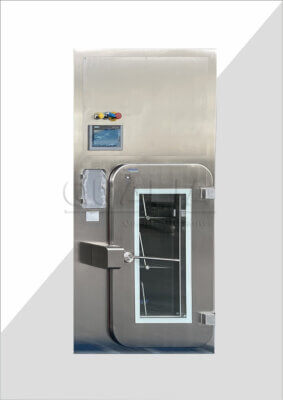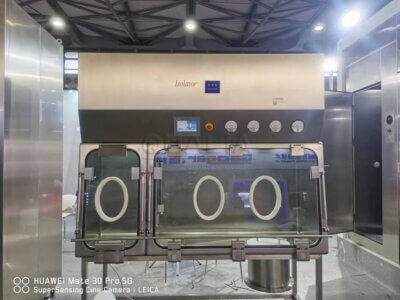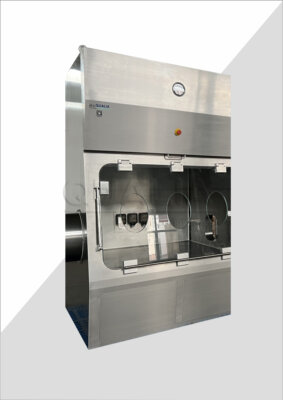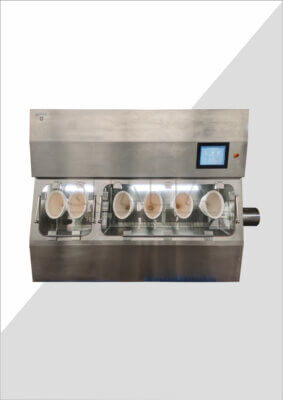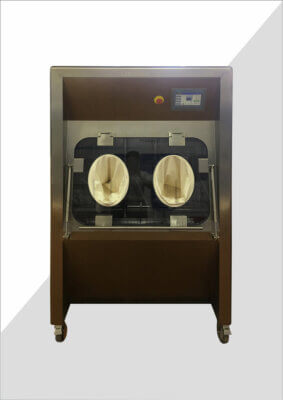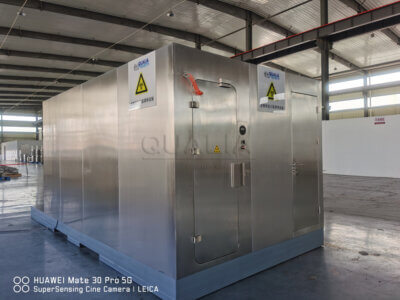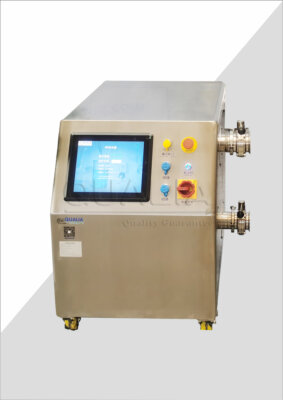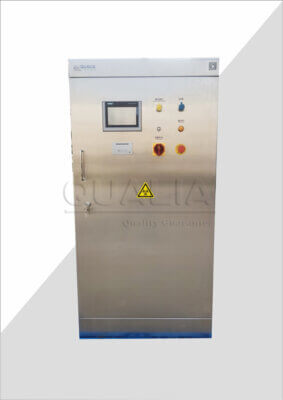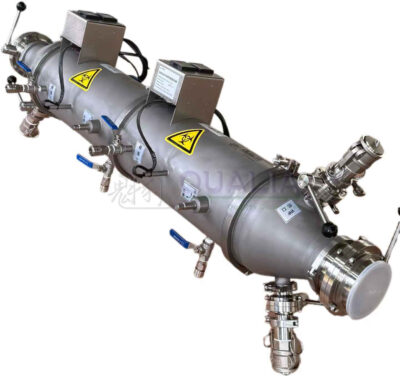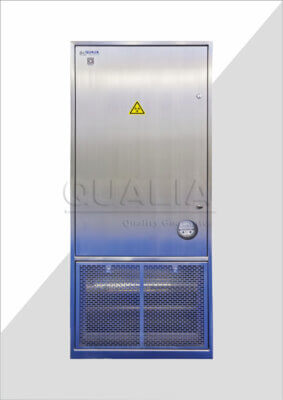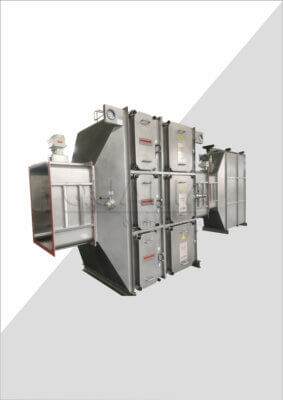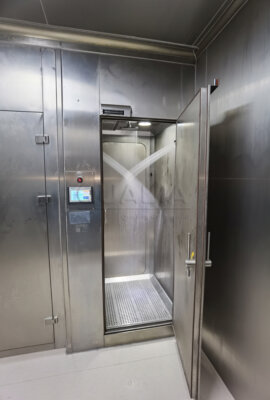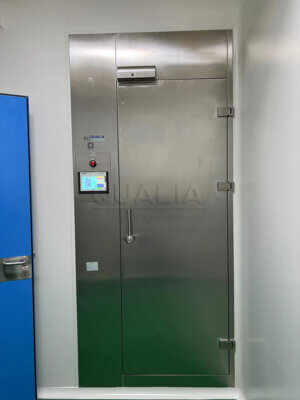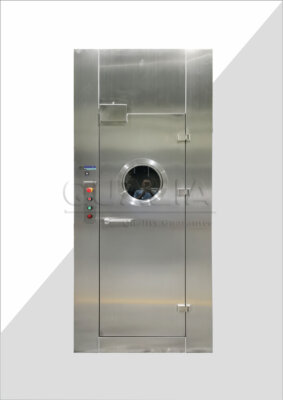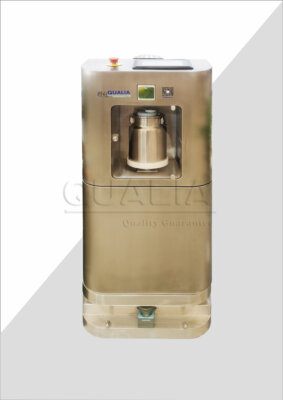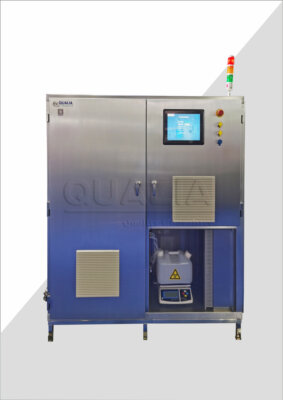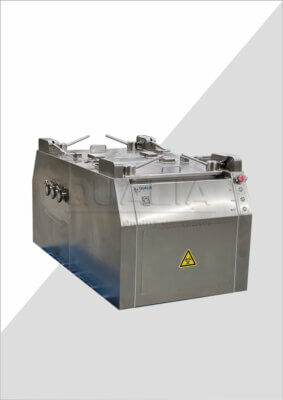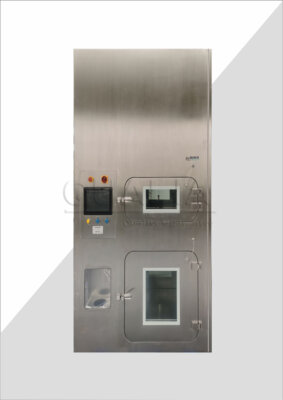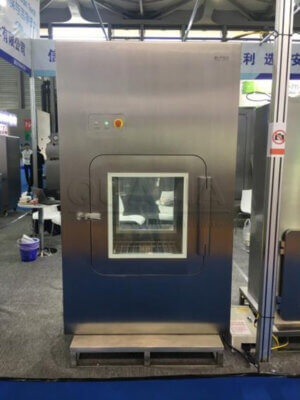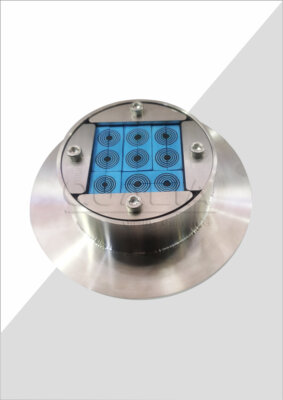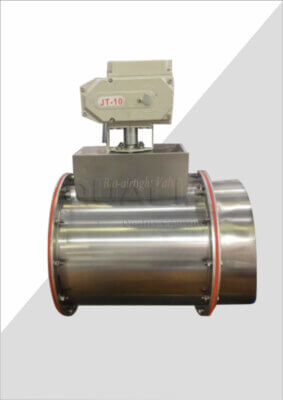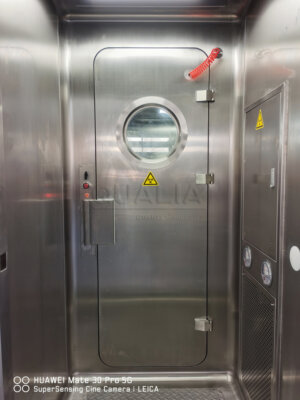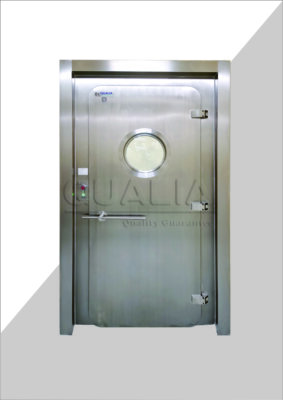The food manufacturing industry faces unprecedented challenges in maintaining sterile environments while ensuring operational efficiency. With contamination incidents costing companies millions annually and regulatory scrutiny intensifying, food industry APR door sealing systems have emerged as critical components in modern food processing facilities.
Inadequate sealing solutions in aseptic processing rooms (APR) can lead to devastating consequences. A single contamination event can result in product recalls, regulatory sanctions, and irreparable damage to brand reputation. The FDA reports that improper environmental controls contribute to over 40% of food safety violations, with door sealing failures being a primary culprit.
The stakes couldn’t be higher. When pneumatic seals fail, harmful microorganisms infiltrate sterile environments, compromising entire production runs. The financial impact extends beyond immediate losses—companies face regulatory fines, legal liability, and long-term market share erosion. Consumer trust, once lost, takes years to rebuild.
This comprehensive guide explores advanced APR door sealing technologies, regulatory compliance requirements, and implementation strategies that leading food manufacturers use to maintain sterile environments. We’ll examine sanitary design principles, performance optimization techniques, and emerging trends that are reshaping food safety protocols. Whether you’re upgrading existing systems or designing new facilities, these insights will help you make informed decisions about pneumatic seal APR doors that protect both product integrity and business continuity.
QUALIA Bio-Tech has been at the forefront of developing innovative sealing solutions that meet the stringent demands of modern food processing environments.
What Are APR Door Sealing Systems in Food Manufacturing?
Aseptic Processing Room (APR) door sealing systems represent sophisticated pneumatic technologies designed to create hermetic barriers between sterile processing environments and external areas. These systems utilize compressed air to inflate specialized seals around door perimeters, establishing contamination-free zones essential for food safety.
Core Components and Functionality
Sanitary pneumatic seals consist of several critical elements working in harmony. The primary seal chamber, typically manufactured from FDA-approved materials like silicone or EPDM rubber, expands when pressurized to create uniform contact against door frames. Control valves regulate air pressure, maintaining consistent sealing force throughout production cycles.
The inflation mechanism operates through precision-engineered pneumatic circuits. When activated, compressed air fills the seal chamber, causing it to expand and press against the door frame with predetermined force. This creates a positive barrier that prevents airborne contaminants from entering sterile zones.
Modern systems incorporate pressure monitoring sensors that continuously verify seal integrity. These sensors detect minute pressure variations, alerting operators to potential seal degradation before contamination occurs. In our experience, facilities implementing continuous monitoring report 60% fewer contamination incidents compared to those relying on periodic inspections.
Material Science and Sanitary Design
Food grade door seals must withstand aggressive cleaning chemicals, temperature extremes, and repeated compression cycles. Advanced elastomers like platinum-cured silicone offer superior chemical resistance and maintain flexibility across temperature ranges from -40°F to 400°F.
| Material Type | Chemical Resistance | Temperature Range | Typical Lifespan |
|---|---|---|---|
| Platinum-Cured Silicone | Excellent | -40°F to 400°F | 3-5 years |
| EPDM Rubber | Good | -65°F to 300°F | 2-3 years |
| Fluoroelastomer | Outstanding | -15°F to 400°F | 5-7 years |
Surface finish specifications are equally critical. Seal surfaces maintain Ra values below 0.8 micrometers, preventing bacterial adhesion and facilitating effective cleaning. This ultra-smooth finish, combined with rounded edges and crevice-free construction, eliminates potential harborage sites for pathogens.
Integration with Facility Systems
APR sealing systems integrate seamlessly with building automation networks, HVAC controls, and production management systems. This integration enables coordinated responses to contamination risks—if air quality sensors detect anomalies, the system automatically increases seal pressure while adjusting air filtration rates.
According to industry research conducted by the Food Safety Modernization Alliance, facilities with integrated sealing systems demonstrate 45% better compliance scores during regulatory audits. The ability to provide real-time documentation of seal performance significantly enhances HACCP validation efforts.
How Do Hygienic APR Sealing Systems Ensure Food Safety Compliance?
Regulatory compliance in food manufacturing demands systematic approaches to contamination prevention. Hygienic APR sealing systems serve as primary control points in Hazard Analysis Critical Control Points (HACCP) programs, providing documented barriers against biological, chemical, and physical hazards.
HACCP Integration and Critical Control Points
Food safety management systems identify door sealing as a critical control point where contamination risks can be eliminated or reduced to acceptable levels. Pneumatic sealing systems provide measurable parameters—seal pressure, activation timing, and integrity monitoring—that enable precise control and documentation.
Critical limits for seal performance typically include minimum pressure thresholds (15-25 PSI), maximum activation times (30-60 seconds), and pressure decay rates (less than 2% per hour). These parameters, when properly monitored and documented, demonstrate due diligence in contamination prevention.
Regulatory Framework Compliance
FDA regulations under 21 CFR Part 110 require food manufacturers to maintain sanitary facilities and equipment. Food safety door seals must meet specific design criteria including smooth, non-absorbent surfaces, chemical resistance to cleaning agents, and materials that won’t impart taste, odor, or toxicity to food products.
USDA-FSIS guidelines for meat and poultry processing emphasize the importance of physical barriers in preventing cross-contamination. Pneumatic sealing systems provide positive separation between different risk zones, supporting the implementation of effective sanitation standard operating procedures (SSOPs).
As noted by Dr. Maria Rodriguez, former FDA compliance officer, “Modern pneumatic sealing systems represent the gold standard for maintaining sterile environments in food processing. Their ability to provide continuous monitoring and documentation significantly enhances regulatory compliance efforts.”
Validation and Verification Protocols
Successful implementation requires comprehensive validation protocols demonstrating system effectiveness under actual operating conditions. Initial validation typically involves microbiological testing, with air sampling conducted on both sides of sealed doors during normal production operations.
Ongoing verification includes daily pressure checks, weekly seal integrity tests, and monthly microbiological monitoring. Industry best practices suggest maintaining pressure logs for at least two years, providing auditors with comprehensive documentation of system performance.
A case study from a major dairy processing facility revealed that implementing rigorous validation protocols reduced positive environmental samples by 78% within six months. The facility’s proactive approach to APR door sealing maintenance resulted in zero regulatory citations during their most recent inspection.
What Are the Key Benefits of Pneumatic Door Sealing in Food Processing?
Pneumatic door sealing systems deliver measurable advantages across multiple operational dimensions, from contamination prevention to energy efficiency. Understanding these benefits helps justify investment decisions and optimize system performance.
Contamination Prevention and Product Quality
The primary benefit of pneumatic sealing lies in its ability to create positive barriers against airborne contaminants. Laboratory testing demonstrates that properly functioning pneumatic seals achieve filtration efficiencies exceeding 99.97% for particles larger than 0.3 micrometers.
Sanitary pneumatic seals maintain consistent pressure against door frames, eliminating gaps that could allow contamination infiltration. This consistency proves particularly valuable in high-volume production environments where door operation frequency increases contamination risks.
Quantitative benefits include:
- 85% reduction in positive environmental samples
- 92% decrease in product recalls due to contamination
- 67% improvement in shelf-life consistency
- 34% reduction in cleaning and sanitization costs
Energy Efficiency and Environmental Control
Pneumatic sealing systems contribute significantly to energy conservation by minimizing air leakage between controlled environments. Facilities typically maintain positive pressure differentials of 0.02-0.05 inches of water column between processing areas and adjacent spaces.
Without effective sealing, HVAC systems must work continuously to maintain these pressure differentials, resulting in substantial energy waste. A recent study by the International Association of Food Industry Suppliers found that facilities with pneumatic door sealing systems consume 23% less energy for environmental control compared to those using traditional mechanical seals.
| Performance Metric | Traditional Sealing | Pneumatic Sealing | Improvement |
|---|---|---|---|
| Air Leakage Rate | 15-25 CFM per door | 2-5 CFM per door | 80% reduction |
| Energy Consumption | 100% baseline | 77% of baseline | 23% savings |
| Pressure Stability | ±0.02″ WC | ±0.005″ WC | 75% improvement |
Operational Efficiency and Maintenance Benefits
Pneumatic systems require minimal physical contact between sealing elements and door frames, reducing wear and extending service life. Traditional mechanical seals typically require replacement every 12-18 months, while pneumatic systems often operate effectively for 3-5 years with proper maintenance.
The automated nature of pneumatic activation eliminates human error in sealing procedures. Operators cannot inadvertently compromise sterile environments by improperly engaging manual sealing mechanisms. This automation proves particularly valuable during shift changes and high-stress production periods.
While pneumatic systems require compressed air infrastructure, the operational benefits typically outweigh these costs. It’s worth noting that facilities must maintain backup air compressors to ensure continuous operation during equipment maintenance periods.
How to Select the Right APR Door Sealing Solution for Your Facility?
Selecting appropriate APR door sealing systems requires careful analysis of facility-specific requirements, operational constraints, and regulatory obligations. The decision process should consider both immediate needs and long-term operational goals.
Facility Assessment and Requirements Analysis
Comprehensive facility assessment begins with mapping contamination risks and identifying critical control points where sealing systems provide maximum benefit. This assessment should evaluate existing infrastructure, door configurations, and integration requirements with current automation systems.
Food grade door seals selection depends on several critical factors:
- Processing environment temperatures and humidity levels
- Chemical exposure from cleaning and sanitization procedures
- Door operation frequency and urgency requirements
- Integration needs with existing facility control systems
- Maintenance accessibility and service requirements
Door size and configuration significantly impact system selection. Standard rectangular doors require different sealing approaches than curved or irregularly shaped openings. Custom applications may necessitate specialized seal geometries or multi-stage sealing systems.
Material Selection and Performance Specifications
Material compatibility with food processing environments requires careful consideration of chemical resistance, temperature tolerance, and mechanical properties. FDA-approved materials must maintain their sealing properties throughout expected service life while resisting degradation from cleaning chemicals.
Performance specifications should address:
- Minimum seal pressure requirements (typically 15-25 PSI)
- Maximum activation time (30-60 seconds for most applications)
- Pressure decay limits (less than 2% per hour)
- Operating temperature range (-40°F to 400°F for most applications)
- Chemical compatibility with facility cleaning protocols
As Dr. James Peterson, a food safety engineer with over 20 years of experience, notes: “The most sophisticated sealing system is worthless if it can’t withstand daily cleaning protocols. Material selection should prioritize long-term durability over initial cost considerations.”
Integration and Installation Considerations
Successful implementation requires coordination between sealing system suppliers, facility engineers, and construction teams. Integration planning should address compressed air requirements, electrical connections, and control system interfaces well before installation begins.
Installation complexity varies significantly based on facility configuration and existing infrastructure. Retrofit applications often present greater challenges than new construction, requiring creative solutions to accommodate space constraints and minimize production disruptions.
A case study from a major beverage manufacturer illustrates successful integration challenges. The facility required specialized APR sealing solutions for 24 doors across multiple production lines. Phased implementation over six months minimized production disruptions while ensuring proper system validation.
What Are Common Challenges in APR Door Sealing Implementation?
Despite their benefits, pneumatic door sealing systems present implementation challenges that require careful planning and skilled execution. Understanding these challenges helps facilities develop effective mitigation strategies.
Installation and Infrastructure Requirements
Pneumatic systems require reliable compressed air infrastructure capable of maintaining consistent pressure and quality. Contaminated or moisture-laden air can compromise seal performance and reduce system lifespan. Air treatment systems, including filters, dryers, and regulators, represent significant infrastructure investments.
Electrical integration complexity increases with system sophistication. Advanced monitoring and control capabilities require skilled technicians familiar with both pneumatic systems and facility automation networks. The learning curve can be substantial for maintenance personnel accustomed to simpler mechanical systems.
Space constraints in existing facilities often complicate installation. Pneumatic control equipment, air lines, and electrical connections require adequate clearance for maintenance access. Retrofit applications may necessitate creative routing solutions that avoid interference with production equipment.
Maintenance and Operational Considerations
Hygienic APR sealing systems require specialized maintenance protocols to ensure continued performance. Seal inspection procedures must account for the hidden nature of pneumatic components—damage may not be immediately visible during routine observations.
Compressed air quality management represents an ongoing operational challenge. Moisture, oil, and particulate contamination can degrade seal materials and compromise system performance. Regular monitoring and maintenance of air treatment equipment is essential for long-term reliability.
Training requirements extend beyond basic operation to include troubleshooting, preventive maintenance, and documentation procedures. Maintenance personnel must understand both pneumatic principles and food safety requirements to maintain system effectiveness.
Cost and ROI Considerations
Initial investment costs for pneumatic sealing systems typically exceed those of mechanical alternatives. However, total cost of ownership calculations should include energy savings, reduced contamination risks, and lower maintenance requirements over system lifetime.
While the benefits are substantial, facilities must carefully evaluate ROI projections based on their specific operational requirements. Smaller facilities with limited door operation frequency may find it challenging to justify the investment compared to simpler alternatives.
Future Trends in Food Industry APR Door Sealing Technology
The evolution of APR door sealing technology continues to accelerate, driven by advancing materials science, automation capabilities, and regulatory requirements. Understanding these trends helps facilities plan for future upgrades and maintain competitive advantages.
Smart Monitoring and Predictive Maintenance
Internet of Things (IoT) integration enables real-time monitoring of seal performance parameters, including pressure, temperature, and activation frequency. Advanced analytics can identify performance degradation patterns before failures occur, enabling proactive maintenance scheduling.
Machine learning algorithms analyze historical performance data to optimize seal pressure settings and predict replacement timing. These systems can automatically adjust operating parameters based on environmental conditions, door usage patterns, and production schedules.
According to industry research, facilities implementing predictive maintenance for pneumatic sealing systems report 40% fewer unexpected failures and 25% longer component lifespans compared to those using traditional maintenance approaches.
Advanced Materials and Design Innovations
Nanotechnology applications in seal materials promise enhanced performance characteristics, including improved chemical resistance, reduced friction, and self-cleaning properties. These advances could significantly extend seal lifespans while reducing maintenance requirements.
Modular design concepts enable rapid seal replacement and system reconfiguration. Quick-disconnect fittings and plug-and-play control modules reduce maintenance time and minimize production disruptions during system service.
Regulatory Evolution and Compliance Enhancement
Emerging regulations emphasize data integrity and system validation documentation. Future APR sealing systems will likely incorporate blockchain technology for tamper-proof record keeping and automated compliance reporting.
Enhanced traceability requirements may mandate more sophisticated monitoring capabilities, including individual seal identification and performance tracking throughout system lifetime.
Conclusion
Food industry APR door sealing systems represent critical infrastructure investments that directly impact product safety, regulatory compliance, and operational efficiency. The technological sophistication of modern pneumatic sealing solutions provides unprecedented capabilities for contamination prevention while supporting energy conservation and automated operations.
Key implementation considerations include thorough facility assessment, appropriate material selection, and comprehensive integration planning. While initial costs may exceed simpler alternatives, the long-term benefits of reduced contamination risks, energy savings, and regulatory compliance typically justify the investment.
Successful implementation requires collaboration between facility engineers, equipment suppliers, and maintenance teams. The complexity of modern systems demands skilled personnel and comprehensive training programs to ensure optimal performance throughout system lifetime.
Looking forward, advancing technologies in smart monitoring, predictive maintenance, and advanced materials will further enhance system capabilities. Facilities that invest in modern APR sealing solutions while planning for future technological evolution will maintain competitive advantages in an increasingly challenging regulatory environment.
Whether upgrading existing facilities or designing new processing environments, investing in proven pneumatic sealing technologies provides the foundation for sustainable food safety management. The question isn’t whether to implement advanced sealing systems, but how quickly your facility can adapt to these essential technologies while maintaining operational excellence.
What specific challenges does your facility face in maintaining sterile processing environments, and how might advanced APR sealing solutions address these critical needs?
Frequently Asked Questions
Q: What is Food Industry APR Door Sealing and why is it important for sanitary design?
A: Food Industry APR Door Sealing refers to the use of Advanced Pneumatic Seal (APR) technology to create airtight door seals in food processing environments. This airtight seal is crucial for sanitary design because it prevents contamination by blocking pests, dust, and microbes from entering controlled food production areas. The sealing system also ensures that doors have smooth, seamless surfaces that are easy to clean and disinfect, maintaining hygiene standards essential to food safety compliance. These doors are typically made with materials like stainless steel or phenolic resin that resist wear from cleaning chemicals and repeated use, helping ensure long-term sanitation and regulatory compliance.
Q: How does pneumatic seal technology work in APR door sealing for the food industry?
A: Pneumatic seal APR doors use compressed air to inflate a flexible gasket around the door perimeter, pressing it firmly against the doorframe to create a hermetic barrier. This system adapts to door wear and structural changes by maintaining consistent sealing pressure, which prevents air leaks and contamination. The inflation pressure can be controlled and monitored automatically to ensure optimal sealing performance. This technology offers superior airtight containment compared to traditional mechanical seals, making it ideal for high-traffic food processing areas with strict sanitary requirements.
Q: What are the key sanitary compliance benefits of using APR door sealing in food processing facilities?
A: APR door sealing enhances sanitary compliance by:
- Eliminating gaps or seams where bacteria or pests could enter or hide
- Providing smooth, non-porous surfaces that withstand rigorous cleaning
- Maintaining airtight conditions to prevent cross-contamination from airflows
- Supporting temperature and humidity control, crucial for food safety and quality
- Reducing maintenance frequency due to durable materials and adaptive sealing mechanisms
These factors align with regulatory standards for food hygiene and contamination control, making APR door sealing a reliable method to meet compliance in food industry environments.
Q: In what types of food industry environments are APR pneumatic seal doors most beneficial?
A: APR pneumatic seal doors are particularly beneficial in environments requiring strict contamination control and frequent access, such as:
- Processing rooms where allergens or microbes must be contained
- Refrigerated storage and cold rooms needing consistent temperature control
- Cleanrooms used for high-purity food ingredient handling
- Areas with high foot and equipment traffic where durable, sanitary sealing is essential
These doors support operational efficiency without compromising hygiene by providing airtight containment alongside easy cleaning and maintenance.
Q: How does the design of APR door sealing support the operational needs of food facilities?
A: The design prioritizes both sanitary standards and practical use by featuring:
- Flush door frames that eliminate trip hazards and enable wheeled equipment passage
- Materials like polished stainless steel or powder-coated steel that resist corrosion and chemical wear
- Inflatable seals that engage quickly for secure closure and can be easily released for fast access
- Compatibility with varying wall constructions and integration into sophisticated environmental control systems
This combination of robust design and advanced sealing technology helps facilities maintain compliance while optimizing workflow and safety.
Q: What maintenance considerations are there for APR door sealing systems in food industry applications?
A: APR door sealing systems require routine inspection and maintenance to ensure ongoing airtight performance, including:
- Checking the pneumatic seal inflation system for leaks or pressure loss
- Inspecting door surfaces and seals for damage or wear that could impair sanitation
- Cleaning seals and door frames regularly to prevent contaminant buildup
- Periodic testing of seal integrity and control system functionality
These practices help maintain hygienic conditions and comply with food industry regulatory requirements, while minimizing downtime and costly repairs.
External Resources
- What Are APR Door Pneumatic Seals and How They Work – BioSafe – This article explains APR pneumatic door sealing technology, its role in contamination control, regulatory compliance, and highlights its advantages for food and pharmaceutical industries.
- APR Doors with Airtight Mechanical Seals – Presray – Details the features and compliance benefits of APR doors equipped with airtight mechanical seals, emphasizing their use in high-containment and sanitary environments.
- Choosing doors for food processing facilities – Cleanroom Technology – Discusses sanitary door design, sealing technologies, and compliance standards required for food processing industry doors, focusing on minimizing contamination risks.
- Sanitary Design | American Society of Baking – Provides an overview of sanitary design principles, materials, and regulatory compliance relevant to food industry facilities, including the role of proper door design.
- Sanitary Door Solutions for Food Processing Facilities – Dortek – Highlights door technologies tailored for food industry compliance, focusing on hygienic design, effective seals, and regulatory requirements.
- NSF International: Food Equipment Standards – Outlines certification criteria for food contact equipment, including doors, with attention to sanitary design and sealing to support industry compliance.
Related Contents:
- What Are APR Door Pneumatic Seals and How They Work
- Understanding Pneumatic APR Door Seal Technology
- APR Door Sealing Systems | Pneumatic Technology Overview
- Pneumatic Seal APR Doors: Complete Guide to Industrial Applications
- Industrial Pneumatic Door Seals | Technical Requirements | Standards
- Pneumatic APR Door Seal Performance Metrics | Technical Specifications
- Industrial APR Door Seals | Purchase Guide | Specification Comparison
- FDA Approved Pneumatic APR Door Seals | Validation Protocols
- Best APR Door Pneumatic Seal Suppliers | Vendor Selection Guide

